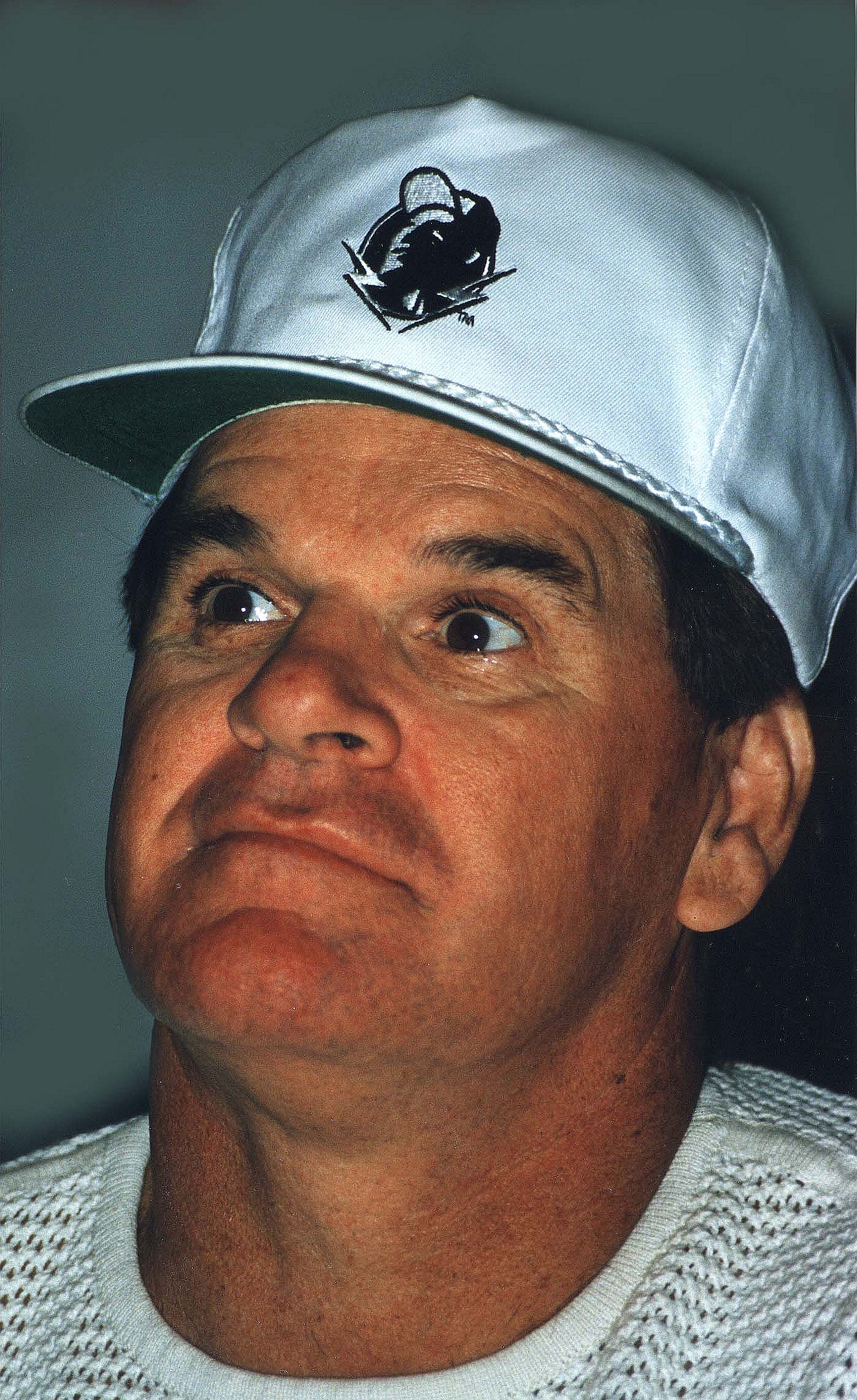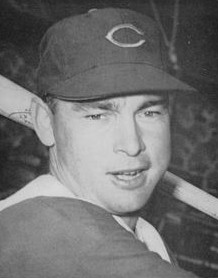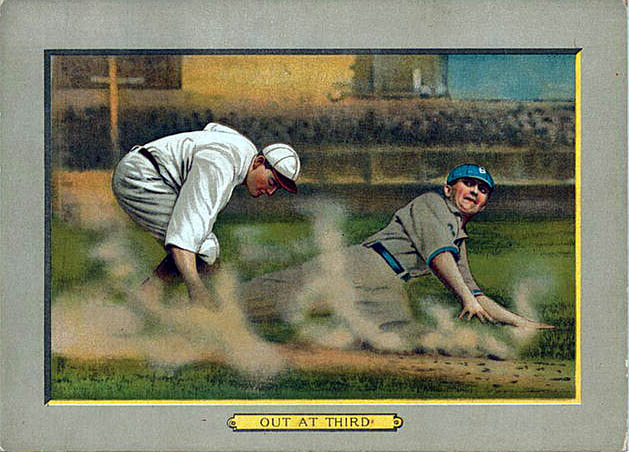|
John Pyecha
John Nicholas Pyecha (born November 25, 1931) is an American former professional baseball player. He was a , right-handed pitcher who played six seasons (1950–1955) of minor league baseball, but made only one Major League appearance for the Chicago Cubs. On April 24, 1954, at Crosley Field, Pyecha entered the game in relief of Warren Hacker in the seventh inning with his Cubs trailing the Cincinnati Redlegs 3–2. Pyecha held the Redlegs off the scoreboard in the seventh and eighth innings; meanwhile, Chicago rallied to take a 5–3 lead thanks to home runs by Ralph Kiner and Hank Sauer. Pyecha started the last half of the ninth inning by issuing a walk to Gus Bell, then retired Jim Greengrass and Ted Kluszewski to get within one out of the victory. But Johnny Temple singled to bring the winning run to the plate, and Wally Post hit a three-run walk-off home run to win the game for the Redlegs. In his lone MLB game, Pyecha allowed three runs, all earned, on four hits ... [...More Info...] [...Related Items...] OR: [Wikipedia] [Google] [Baidu] |
Pitcher
In baseball, the pitcher is the player who throws ("pitches") the Baseball (ball), baseball from the pitcher's mound toward the catcher to begin each play, with the goal of out (baseball), retiring a batter (baseball), batter, who attempts to either make contact with the pitch (baseball), pitched ball or draw a base on balls, walk. In the numbering system used to record defensive plays, the pitcher is assigned the number 1. The pitcher is often considered the most important player on the defensive side of the game, and as such is situated at the right end of the defensive spectrum. There are many different types of pitchers, such as the starting pitcher, relief pitcher, middle reliever, left-handed specialist, lefty specialist, setup man, and the closing pitcher, closer. Traditionally, the pitcher also bats. Starting in 1973 with the American League(and later the National League) and spreading to further leagues throughout the 1980s and 1990s, the hitting duties of the pitcher h ... [...More Info...] [...Related Items...] OR: [Wikipedia] [Google] [Baidu] |
Base On Balls
A base on balls (BB), also known as a walk, occurs in baseball when a batter receives four pitches that the umpire calls '' balls'', and is in turn awarded first base without the possibility of being called out. The base on balls is defined in Section 2.00 of baseball's Official Rules, and further detail is given in 6.08(a). It is considered a faux pas for a professional player to literally walk to first base; the batter-runner and any advancing runners normally jog on such a play. The term "base on balls" distinguishes a walk from the other manners in which a batter can be awarded first base without liability to be put out (e.g., hit by pitch (HBP), catcher's interference). Though a base on balls, catcher's interference, or a batter hit by a pitched ball all result in the batter (and possibly runners on base) being awarded a base, the term "walk" usually refers only to a base on balls, and not the other methods of reaching base without the bat touching the ball. An importan ... [...More Info...] [...Related Items...] OR: [Wikipedia] [Google] [Baidu] |
Los Angeles Angels (PCL)
The Los Angeles Angels were a professional baseball team based in Los Angeles that played in the "near-major league" Pacific Coast League (PCL) from 1903 through 1957. The Angels were formed in 1903 as charter members of the PCL. In 1958, they were forced to move to a smaller market as a result of the Brooklyn Dodgers' move to Los Angeles, which brought Major League Baseball competition into the PCL's territory. The franchise relocated to Spokane, Washington, as the Spokane Indians. The 1903, 1934, and 1943 Angels were recognized as being among the 100 greatest minor league teams of all time. The 1934 team, with a 137–50 record, was ranked as the number one minor league team. Team history From 1903 through 1957, the Los Angeles Angels, a PCL team, were one of the mainstays of the Pacific Coast League, winning the PCL pennant 12 times. The Angels, along with the Portland Beavers, Oakland Oaks, Sacramento Solons, San Francisco Seals, and Seattle Indians were charter members ... [...More Info...] [...Related Items...] OR: [Wikipedia] [Google] [Baidu] |
Innings Pitched
In baseball, innings pitched (IP) are the number of innings a pitcher has completed, measured by the number of batters and baserunners that are put out while the pitcher is on the pitching mound in a game. Three outs made is equal to one inning pitched. One out counts as one-third of an inning, and two outs counts as two-thirds of an inning. Sometimes, the statistic is written 34.1, 72.2, or 91.0, for example, to represent innings, innings, and 91 innings exactly, respectively. Runners left on base by a pitcher are not counted in determining innings pitched. It is possible for a pitcher to enter a game, give up several hits and possibly even several runs, and be removed before achieving any outs, thereby recording a total of zero innings pitched. Alternatively, it is possible for a pitcher to enter a situation where there are two runners on base and no outs. He could throw one pitch that results in a triple play, and for that one pitch he would be credited with a full inning ... [...More Info...] [...Related Items...] OR: [Wikipedia] [Google] [Baidu] |
Strikeouts
In baseball or softball, a strikeout (or strike-out) occurs when a batter accumulates three strikes during a time at bat. It usually means that the batter is out. A strikeout is a statistic recorded for both pitchers and batters, and is denoted by K in scorekeeping and statistics. A "strikeout looking" — in which the batter does not swing and the third strike is called by the umpire — is usually denoted by a ꓘ. Although a strikeout suggests that the pitcher dominated the batter, the free-swinging style that generates home runs also leaves batters susceptible to striking out. Some of the greatest home run hitters of all time—such as Alex Rodriguez, Reggie Jackson, and Jim Thome—were notorious for striking out. Rules and jargon A pitched ball is ruled a ''ball'' by the umpire if the batter did not swing at it and, in that umpire's judgement, it does not pass through the strike zone. Any pitch at which the batter swings unsuccessfully or, that in that umpire's jud ... [...More Info...] [...Related Items...] OR: [Wikipedia] [Google] [Baidu] |
Hit (baseball)
In baseball statistics, a hit (denoted by H), also called a base hit, is credited to a batter when the batter safely reaches or passes first base after hitting the ball into fair territory with neither the benefit of an error nor a fielder's choice. Scoring a hit To achieve a hit, the batter must reach first base before any fielder can either tag him with the ball, throw to another player protecting the base before the batter reaches it, or tag first base while carrying the ball. The hit is scored the moment the batter reaches first base safely; if he is put out while attempting to stretch his hit to a double or triple or home run on the same play, he still gets credit for a hit (according to the last base he reached safely on the play). If a batter reaches first base because of offensive interference by a preceding runner (including if a preceding runner is hit by a batted ball), he is also credited with a hit. Types of hits A hit for one base is called a single, for tw ... [...More Info...] [...Related Items...] OR: [Wikipedia] [Google] [Baidu] |
Walk-off Home Run
In baseball, a walk-off home run is a home run that ends the game. For a home run to end the game, it must be hit in the bottom of the final inning of the game and generate enough runs to exceed the opponent's score. Because the opponent will not have an opportunity to score any more runs, there is no need to finish the inning and the teams can walk off the field immediately. The winning runs must still be counted at home plate. History and usage of the term Although the concept of a game-ending home run is as old as baseball, the adjective "walk-off" attained widespread use only in the late 1990s and early 2000s. The first known usage of the word in print appeared in the ''San Francisco Chronicle'' on April 21, 1988, Section D, Page 1. ''Chronicle'' writer Lowell Cohn wrote an article headlined "What the Eck?" about Oakland reliever Dennis Eckersley's unusual way of speaking: "For a translation, I go in search of Eckersley. I also want to know why he calls short home runs 'str ... [...More Info...] [...Related Items...] OR: [Wikipedia] [Google] [Baidu] |
Wally Post
Walter Charles Post (July 9, 1929 – January 6, 1982) was a right fielder in Major League Baseball.Wally Post Fielding at fangraphs.com, URL accessed August 20, 2009 From 1949 through 1964, Post played for the Cincinnati Reds & Redlegs (1949, 1951–57, 1960–63), (1958–60), (1963) and |
Run (baseball)
In baseball, a run is scored when a player advances around first, second and third base and returns safely to home plate, touching the bases in that order, before three outs are recorded and all obligations to reach base safely on batted balls are met or assured. A player may score by hitting a home run or by any combination of plays that puts him safely "on base" (that is, on first, second, or third) as a runner and subsequently brings him home. Once a player has scored a run, they may not attempt to score another run until their next turn to bat. The object of the game is for a team to score more runs than its opponent. The Official Baseball Rules hold that if the third out of an inning is a force out of a runner advancing to any base then, even if another baserunner crosses home plate before that force out is made, his run does not count. However, if the third out is not a force out, but a tag out, then if that other baserunner crosses home plate before that tag out is ... [...More Info...] [...Related Items...] OR: [Wikipedia] [Google] [Baidu] |
Single (baseball)
In baseball, a single is the most common type of base hit, accomplished through the act of a batter safely reaching first base by hitting a fair ball (thus becoming a runner) and getting to first base before a fielder puts him out. As an exception, a batter-runner reaching first base safely is not credited with a single when an infielder attempts to put out another runner on the first play; this is one type of a fielder's choice. Also, a batter-runner reaching first base on a play due to a fielder's error trying to put him out at first base or another runner out (as a fielder's choice) is not credited with a single. On a single hit to the outfield, any runners on second base or third base normally score, and sometimes the runner from first base is able to advance to third base. Depending on the location of the hit, a quick recovery by the outfielder can prevent such an advance or create a play on the advancing runner. Hitters who focus on hitting singles rather than doubles ... [...More Info...] [...Related Items...] OR: [Wikipedia] [Google] [Baidu] |
Johnny Temple
John Ellis Temple (August 8, 1927 – January 9, 1994) was a Major League Baseball second baseman who played for the Redlegs/Reds (1952–59; 1964); Cleveland Indians (1960–61), Baltimore Orioles (1962) and Houston Colt .45s (1962–63). Temple was born in Lexington, North Carolina. He batted and threw right-handed. Temple was a career .284 hitter with 22 home runs and 395 RBI in 1420 games. A legitimate leadoff hitter and four-time All-Star, he was a very popular player in Cincinnati in the 1950s. Throughout his career, he walked more often than he struck out, compiling an outstanding 1.92 walk-to-strikeout ratio (648-to-338) and a .363 on-base percentage. Temple also had above-average speed and good instincts on the base paths. Quietly, he had 140 steals in 198 attempts (71%). In , Temple and six of his Redleg teammates— Ed Bailey, Roy McMillan, Don Hoak, Gus Bell, Wally Post and Frank Robinson—were voted into the National League All-Star starting lineup, the re ... [...More Info...] [...Related Items...] OR: [Wikipedia] [Google] [Baidu] |
Out (baseball)
In baseball, an out occurs when the umpire rules a batter or baserunner out. When a batter or runner is out, they lose their ability to score a run and must return to the dugout until their next turn at bat. When three outs are recorded in a half-inning, the batting team's turn expires. To signal an out, an umpire generally makes a fist with one hand, and then flexes that arm either upward, particularly on pop flies, or forward, particularly on routine plays at first base. Home plate umpires often use a "punch-out" motion to signal a called strikeout. Ways of making outs * The most common ways batters or runners are put out are when: ** The batter strikes out (they make three batting mistakes, known as ''strikes'', without hitting the ball into fair territory); ** The batter flies out (they hit the ball and it is caught before landing); ** a baserunner is tagged out (they are touched by the ball, held in an opponent's hand, while not on a base); ** a baserunner is forced o ... [...More Info...] [...Related Items...] OR: [Wikipedia] [Google] [Baidu] |


.jpg)



.jpg)


